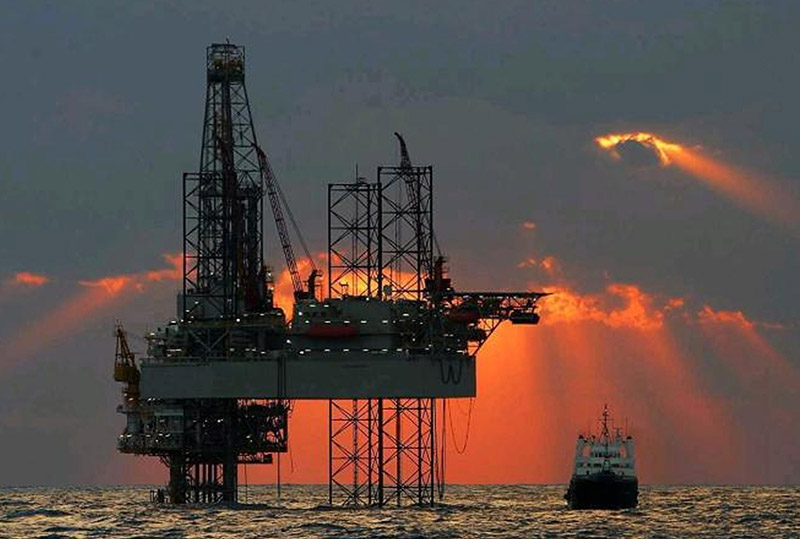(Bloomberg) — The White House plan to trim the national debt includes selling off half of the nation’s emergency oil stockpile and the entire backup gasoline supply, part of a broad series of changes proposed by President Donald Trump to the federal government’s role in energy markets.
Trump’s first complete budget proposal, released Tuesday, would raise $500 million in fiscal year 2018 — and as much $16.6 billion over the next decade — by drawing down the Strategic Petroleum Reserve.
“We think it’s a responsible thing to do," Mick Mulvaney, head of the White House Office of Management and Budget, told reporters. The “risk goes down dramatically when we have increased domestic production like we have today.”
The proposal also seeks to boost government revenues by allowing drilling in the Arctic National Wildlife Refuge, ending the practice of sharing oil royalties with states along the Gulf of Mexico and selling off government-owned electricity transmission lines in the West. Like much of the budget, those moves are likely to face opposition on Capitol Hill.
Presidential budget proposals typically undergo significant changes in Congress, but they provide insight into White House priorities.
The Strategic Petroleum Reserve currently holds 687.7 million barrels of oil in salt caverns and tanks at designated locations in Texas and Louisiana, which allow for quick distribution when natural disasters or unplanned incidents occur. The White House budget plan calls for selling 270 million barrels of reserve oil over the next decade beyond already planned sales, and it proposes closing two of the four Gulf Coast reserve sites. After all those sales, the reserve would be about 260 million barrels, it said.
The plan also seeks to close the Northeast Gasoline Supply Reserve, an emergency gasoline stockpile created in 2012 after Hurricane Sandy left some New York gas stations without fuel. It holds 1 million barrels of gasoline, all of which would be sold in fiscal year 2018 under the White House proposal.
Congressional Measures
Laws enacted in 2015 and 2016 call for the sale of nearly 190 million barrels of oil from the strategic petroleum reserve between 2017 and 2025 to raise money for unrelated government programs. Those sales would cut the reserve by about 27%. Slashing the stockpile in half beyond that would require legal changes, as the reserve must now contain a minimum of 450 million barrels.
Critics said the move risks undercutting an essential safeguard created after the 1973 oil embargo to help the U.S. weather supply shocks.
"The Strategic Petroleum Reserve is America’s only formal short-term line of defense against oil supply disruptions and price spikes," said Robbie Diamond, president of Securing America’s Future Energy, a group aiming to pare U.S. dependence on oil. "While we’ve been lulled into a false sense of complacency by the current period of relatively low oil prices, disruptions and volatility in the oil market are alive and well."
Oil, Gas Proposals
Trump is also seeking to raise money with two other proposed changes — one that would be cheered by the oil industry and another that would draw its ire.
He projects raising $1.8 billion over the next decade by opening up the 19-million-acre Arctic National Wildlife Refuge to oil and gas development. The idea of allowing drilling in the refuge for its estimated 12 billion barrels of crude has long been championed by Alaska Republicans, including Senator Lisa Murkowski, who heads the appropriations subcommittee in charge of Interior spending.
But it’s anathema to environmentalists, who have successfully blocked ANWR drilling plans from advancing on Capitol Hill by stoking concerns about threats to the polar bears, caribou, wolves and other animals that live in the territory.
"For 30 years, Congress has voted nearly 50 times on whether or not to drill in the Arctic National Wildlife Refuge, yet our nation’s largest and wildest refuge remains protected today, thanks to the overwhelming support of the American people," said Kristen Miller, interim executive director of the Alaska Wilderness League.
Trump’s budget request suggests ANWR leasing could begin to pay off in fiscal 2022, with $100 billion in projected revenue that year. In addition to environmentalists’ opposition, it’s unclear how much appetite energy companies would have for the reserve. Monster discoveries there could yield decades of oil production, but the cost of operations in northern Alaska could discourage the activity amid modest crude prices and the domestic shale boom.
Offshore Royalties
Trump’s budget request also revives an Obama-era proposal to cut the payments Gulf Coast states collect from offshore drilling near their coastlines, a change that would translate to an extra $3.56 billion in federal revenue over the next decade. Under a 2006 law, four Gulf states — Alabama, Louisiana, Mississippi and Texas — now claim 37.5% of the royalties that oil and gas companies send the federal government in exchange for drilling rights and production on some Gulf of Mexico leases.
Trump’s move echoes Obama’s attempt to divert some of those royalty payments. And his bid to quash state revenue sharing is likely to meet the same fierce resistance that Obama’s plans did. Just as they did under Obama, Gulf Coast lawmakers will fight to defend those payments, which help support restoration programs.
The budget also proposes restarting the Nuclear Waste Fund Fee in 2020, a sign that the administration is planning to have a permanent storage site for that waste up and running by that time — presumably at a site in Nevada known as Yucca Mountain. That fee would raise nearly $3.1 billion over 10 years, it estimates.
The White House foresees $2.4 billion in additional revenue in 2019 from the sale of federally-owned transmission lines in the West. Those power lines mostly carry electricity from government-owned dams to metro areas.
Bloomberg News by Catherine Traywick and Jennifer A. Dlouhy




